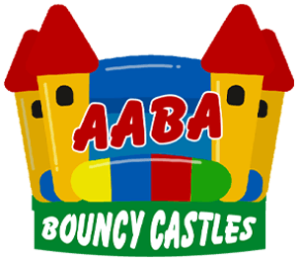Method Statement and Health & Safety
METHOD STATEMENT
1. Upon arrival the driver will take note of any safety information or displays and adhere to the rules of the site at all times.
2. The driver will then report to the hirer or reception and inform the management of their arrival.
3. The driver will ensure that whilst the vehicle is on a designated carriageway or road surface, the rules of that specific highway are abided by at all times.
4. When travelling off road,, including footpath or grass verges, the vehicle will be required to travel at a maximum of 10 miles per hour with the hazard lights flashing at all times.
5. The site will be inspected to ensure it is still safe and suitable for the inflatable and event on the day.
6. Wind speed will be checked using a company anemometer to ensure it is either or below 24mph.
5. If this is not the case the event cannot take place and the event will be delayed or cancelled.
7. The erection site will then be checked for any large stones or objects. Which will be removed and disposed in a safe manner.
8. The area will then be checked again for suitable height & for any obstructions. I.e. cables, trees and lights and amended accordingly.
9. The inflatable will then be laid out & unfolded into place.
10. All cables will be ran around the outside of the erection site perimeter and the wires crossing footpaths will either be covered or items placed over them or the area obstructed to reduce the risk of trips to the person on site.
11. The inflation device (blower) will then be checked and also the output matched to the inflatable of 1.5 hp.
12. The inflation device (blower) will then be connected to the inflatable via its blower pipe at the rear of the inflatable.
13. The blower pipe will be set at a 90 degree angle to the inflatable with a distance of at least 1.4m away from the back of the inflatable in order to meet BSEN 14960:2013. The blower pipe will also be checked to ensure it is not twisted or bent in any way as to reduce airflow to the inflatable.
14. All vents on the inflatable will then be checked and secured/closed to ensure their will be no loss of airflow to the inflatable whiles in use.
15. The inflatable will then be secured at all times by the ground anchor points by pegging them in place using 16mmx 380mm steel anchor steaks at a 45 degree angle with no more then 25mm exposed above the ground to meet BSEN 14960:2013.
16. The high level anchor points will then be secured using rope from the inflatable to the ground. These will then be secure again using sing 16mmx 380mm steel anchor steaks into the ground below at a 45 degree angle with no more then 25mm exposed above the ground to meet BSEN 14960:2013.
17. Safety matting will then be placed to the front of the inflatable.
18. It is imperative that guests or other persons involved in the event do not encroach on the set up area unless specifically requested to do so.
19. Once the installation is complete the installation team will check all anchor points, positions of the safety matting and the route of the wires to ensure they are all still correct.
20. Once the inflatable has been checked over by installation team, the event may begin and the inflatable passed over to our member of staff supervising the event or the hirer.
21. If the inflatable is set up before the event start time the inflatable will be deflated until the event is to begin.
22. The hirers staff will supervise all participants to ensure they use the inflatable correctly and safely at all times.
23. The hirers staff will monitor the weather and in the event of rain will evacuate the inflatable and ensure no one uses the inflatable until the rain has passed. The inflatable will then be towel dried before it is used again.
24. The hirers staff will monitor the generator fuel reserve each hour. Once the fuel reserve tank reaches or under the inflatable will be turned off and the generators left to cool, if hot and the tanks refuelled. Any additional fuel will be stored in a secure, locked area or vehicle.
25. Upon completion of the event, the inflatable must be evacuated and the member of staff will ensure that no participants are left on the item whilst deflation is in progress.
26. Deflation will be assisted by opening the vents to the side and the back of the inflatable.
27. Once deflation has completed, all anchor pegs, cables, blowers will be removed from site & placed back into the collection vehicles.
28. The inflatable will then be folded & rolled in an acceptable manor & transported to the vehicle, by suitable barrow/truck.
29. The area will then be checked for debris and other equipment, which will be dealt with and removed from site.
30. The delivery vehicle will then depart the site, in a similar manor to that described above, again taking note of any instructions given or signing in place.
Compiled By: SPW Management Solutions Date: July 2021
Approved By: Martin Ross
Call today: 07716 038206

